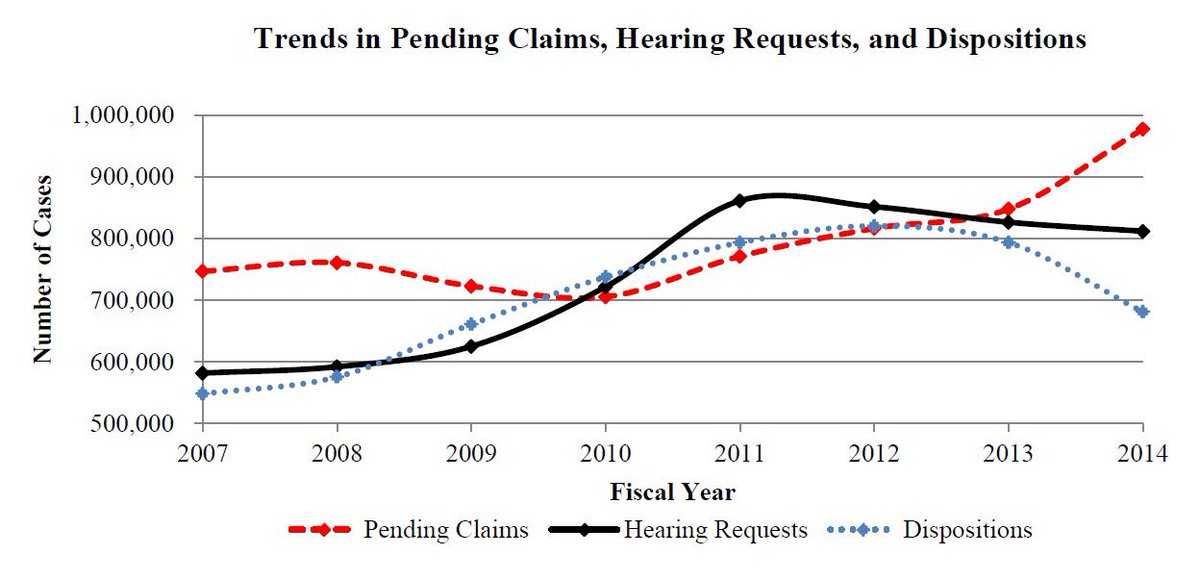There has been a longstanding Congressional wish to encourage those who receive Social Security disability benefits to return to work. Some of this comes from a genuine desire to help the disabled but most of it comes from a desire to reduce the amount spent on disability benefits. This has led to one piece of legislation after another, each one adding a new layer of work incentives. There has been a persistent belief that some tinkering with work
incentives will result in more disabled people returning to work. None of this has made a difference. Few Social Security disability recipients return to work. What we have now is a preposterously complex system of work incentives that is difficult for Social Security to administer and impossible for the disabled to understand. Most important, the mess we have now just doesn't work.
The latest work incentive plan is to dramatically simplify, gradually Social Security disability benefits on account of work earnings from work rather the current systems which allow Social Security disability recipients to work for a significant length of time with no reduction in their benefits until they get to a certain point at which their benefits abruptly terminate (although they're easily restarted). The idea is to implement a slope instead of a cliff. Social Security has been conducting a lengthy study of substituting a benefit offset. The call this the BOND (Benefit Offset National Demonstration) project.
The agency's Office of Inspector General (OIG) just released a study of the BOND project. Here's an excerpt from the OIG report:
The latest work incentive plan is to dramatically simplify, gradually Social Security disability benefits on account of work earnings from work rather the current systems which allow Social Security disability recipients to work for a significant length of time with no reduction in their benefits until they get to a certain point at which their benefits abruptly terminate (although they're easily restarted). The idea is to implement a slope instead of a cliff. Social Security has been conducting a lengthy study of substituting a benefit offset. The call this the BOND (Benefit Offset National Demonstration) project.
The agency's Office of Inspector General (OIG) just released a study of the BOND project. Here's an excerpt from the OIG report:
As of January 2015, the BOND project’s total cost was approximately $86.8 million. As of October 2014, only 2,333 (2.7 percent) of the 85,140 BOND project’s participants had used the offset for 1 or more months. Also, Abt [the contractor] reported that the BOND project’s benefit offset did not have a statistically significant impact on average total earnings in 2012 for Stage 1 participants; and the Stage 2 two treatment groups’ average total 2012 earnings increased above the control group by only $279 and $301 (about 8 percent), respectively.This is what I expected. The study has been expensive. Few have taken advantage of BOND. It has had no significant effect upon the behavior of Social Security disability benefits recipients.
The reason why BOND isn't working in the way its supporters envisioned is simple. Social Security disability recipients are quite sick. Few have any capacity to return to work. Those who are unfamiliar with the program visualize claimants getting better and returning to work. However, the one year duration requirement in Social Security's definition of disability means that happens only rarely. If you're sick enough to be disabled for a year or more, it's unlikely that you'll get significantly better at some later time. In fact, it's very likely your medical condition will just get worse as time goes on. Yes, recovery does happen but it's rare. Those who are not familiar with Social Security disability determination also believe that many Social Security disability recipients aren't really that sick. (Why, my barber told me that he heard from his sister that her neighbor got on Social Security disability and there's not a thing wrong with him!) This belief is unshakable. It persists even in those who are disabled themselves and struggling to get on Social Security disability benefits. The truth is that it's ridiculously difficult to get on disability benefits. Many people are incapable of believing this.
A benefit offset program should be adopted, not because it will induce more disabled people to return to work, but because it will be simpler to implement. We've had one ill-advised work incentive plan after another for decades. They haven't worked and they're not going to work. It's time to stop tinkering. Have a little consideration for the people who have to administer the program. Simplify.
